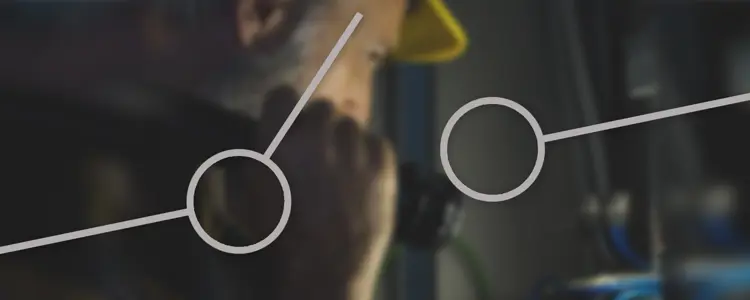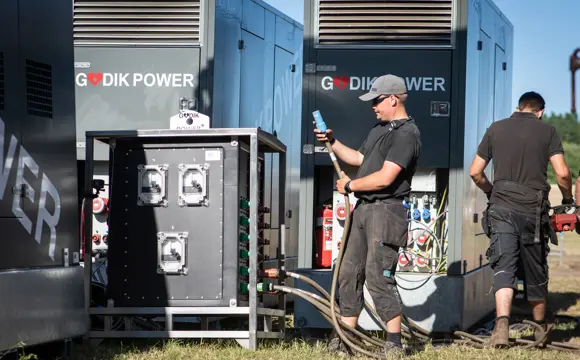5 tips for getting hybrid rental power right
Power rental companies are increasingly offering hybrid power solutions that combine diesel gensets with energy storage systems (ESSes) and renewables. Such solutions often use less fuel, emit less carbon dioxide, and make less noise than genset-based assets. As such, they are ideally suited for a world that needs mobile power but is also fighting climate change – and for applications where strict noise and emissions regulations are in effect.
Example: urban construction
To take just one example, rental power is often used in urban construction, and as urbanisation continues, the need for mobile power shows no sign of lessening. Many cities, however, are tightening emissions regulations: In Oslo, Norway, for example, fossil-free construction sites have been required for public projects since 2017. Such regulations force construction companies to use clean power solutions – and they force rental companies to offer such solutions if they want to stay in business.
A flexible and scalable approach
Hybrid power is not necessarily clean. Instead, the term refers to any combination of two or more power sources (mains, gensets, ESSes, or anything else) to improve reliability, lower fuel consumption, or reduce carbon emissions. But whenever gensets are combined with a low-emission power source, the rental company and customer immediately realise an environmental and climate benefit. In addition, hybrid power is very flexible and scalable. If one source is unavailable or unacceptable, another source can take over, and more sources can be added as required.
To return to our example above, the rental company can supply a rental asset with an ESS and one or more gensets. It can be configured to provide clean and silent ESS power at times when noise and smoke would be unacceptable to nearby residents, for example in the morning or on weekends. During the day, or during transitory demand peaks when activity surges, the gensets can be started to contribute more power and cover demand, closing down again when they are no longer needed. And the ESS can be charged from a genset or mains connection when convenient, for example at night. If the rental customer needs more power, more gensets or ESSes can easily be added to the setup.
Flexible power requires flexible control
For the customer, this is great news. They get a solution that complies with local regulations, improves air quality and the working environment, and boosts their green image. For the rental company, however, providing hybrid power solutions can be a challenge: How do you ensure that your hybrid rental assets provide uninterrupted power to match the load demand while complying with regulations? And how do you ensure that they can be scaled and used in many different applications as needed?
The answer is to fit your flexible hybrid rental assets with equally flexible, scalable, and user-friendly control solutions. Here are a couple of useful tips to consider when sourcing control solutions for your rental assets.
5 tips for getting hybrid rental power right
- Get controllers that can be reconfigured to suit the changing needs of your customers. One week your controller may need to control only an ESS; the next, it may also need to handle a genset. Get a controller that can quickly be set up to address new challenges
- The need for flexibility also extends to the controller features. You probably wouldn’t recharge an ESS from a PV panel on a construction site, but you might have to do it in other applications, for example outdoor events such as concerts where genset noise is an unwelcome nuisance. Get a controller that does not limit your options.
- Operational reliability is key. You need a solution that will keep your hybrid power asset running – without user intervention: You can’t expect busy construction workers to spend time switching sources when needed. Your controller should measure the current load (and the state of charge of your ESS, if you’re using one), starting and stopping sources as necessary (and charging or discharging your ESS as required).
- Your control solution should be user friendly. For your customers, the rental asset should be plug and play; for your technicians, it should be easy to configure and reconfigure as required. And if anything goes wrong on site, it is a great help to your customers if they can see what the problem is so they can fix it themselves or tell your support staff.
- Depending on your operation, it can be an advantage to get a controller that offers remote monitoring so you can check from your office that everything is running as it should. It gives you a great real-time overview of the performance of your rental assets, and being able to spot irregularities at a distance helps you carry out preventive maintenance.
Contact us for more information
When done right, hybrid power rental provides many benefits for rental companies and rental customers alike: rapid deployment, ease of use – and most importantly clean, silent, fuel efficient, and low-carbon power in a wide range of applications. But doing it right does require you to get a control solution that matches the built-in flexibility of hybrid power, fits your changing requirements, and adapts to them.
Contact us for more information, and a talk about how our control solutions can help you offer flexible and clean hybrid power rental solutions.
Read our hybrid power guide
-

Contact us to discuss your options
- 90 years of energy pioneering
- Manufactured at the highest standards
- Superior quality
- Unmatched service and support
- Made in Denmark







